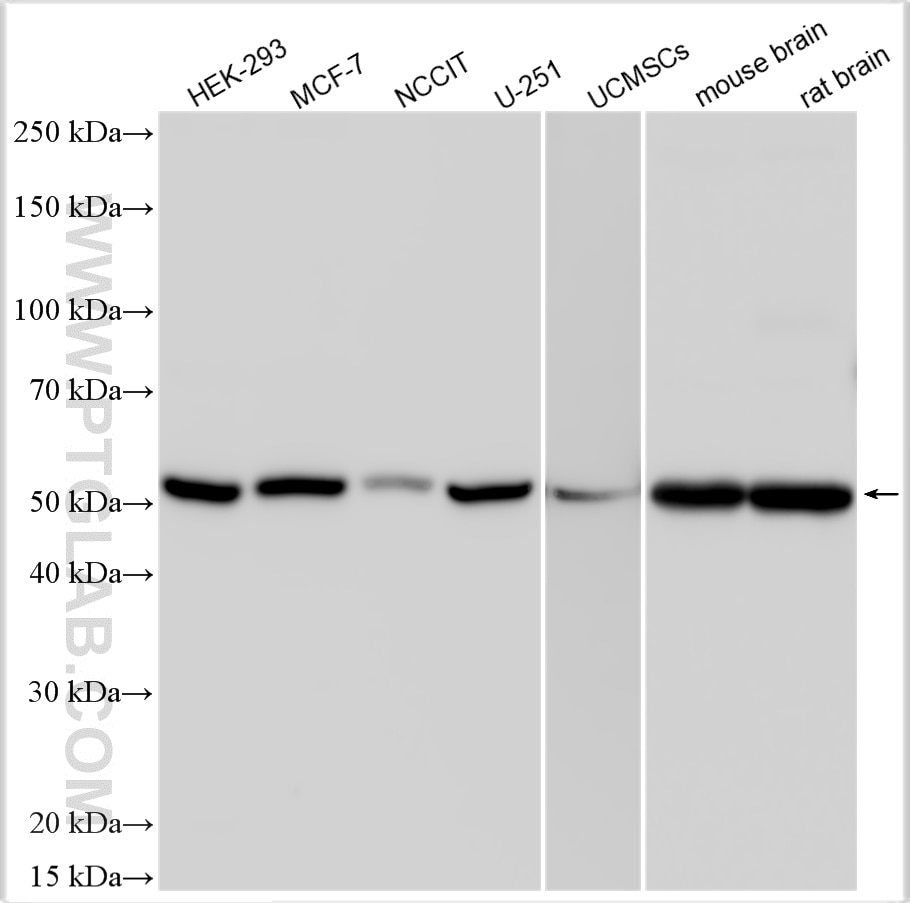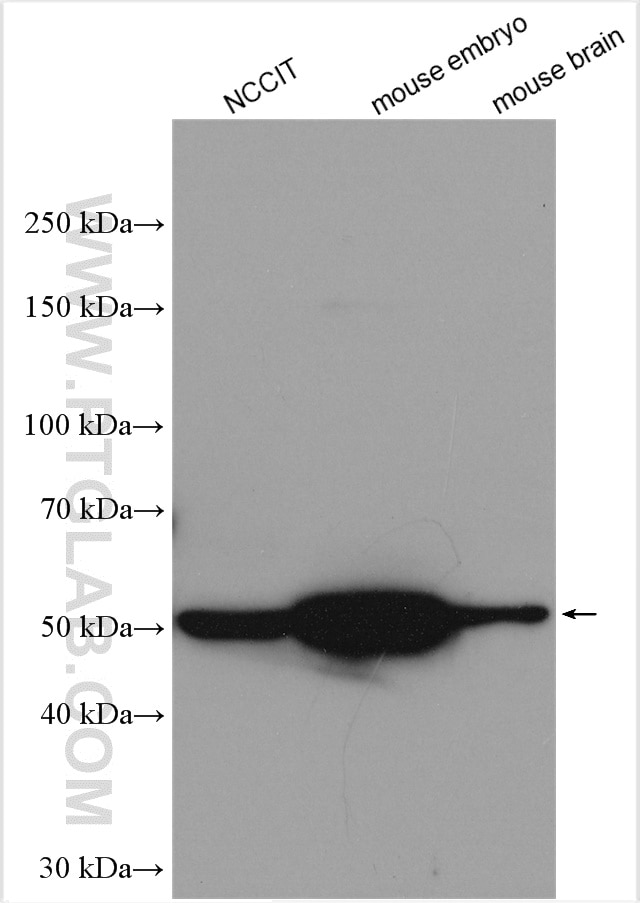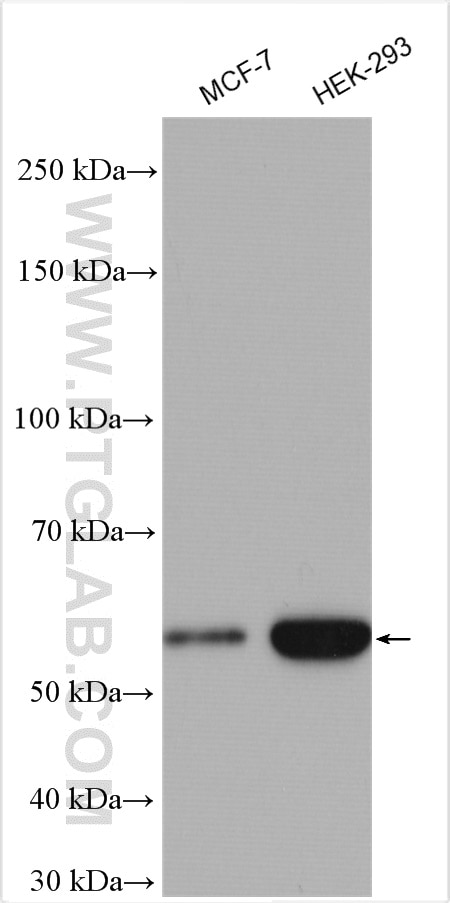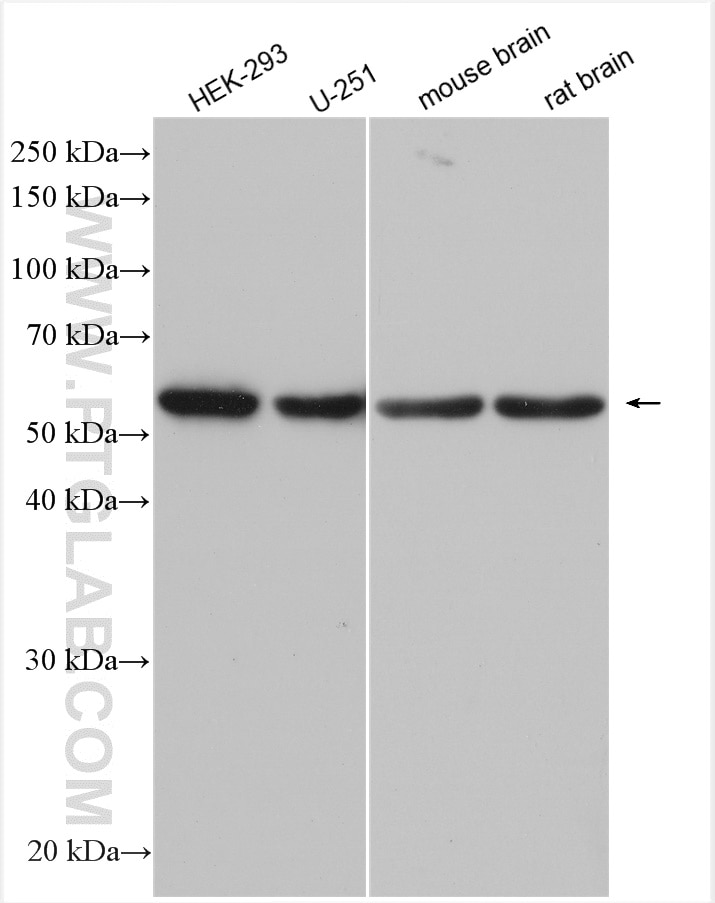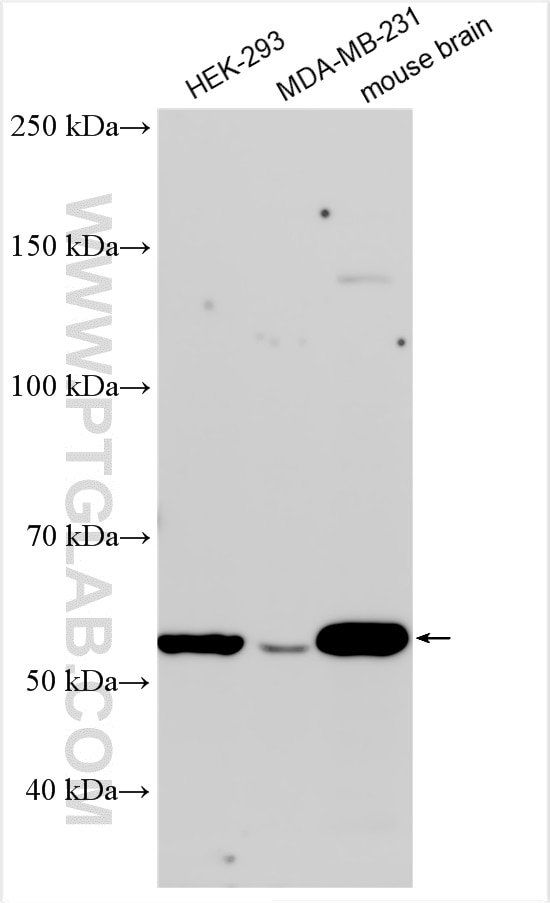- Phare
- Validé par KD/KO
Anticorps Polyclonal de lapin anti-OCT4/POU5F1
OCT4/POU5F1 Polyclonal Antibody for WB, ELISA
Hôte / Isotype
Lapin / IgG
Réactivité testée
Humain, rat, souris et plus (2)
Applications
WB, IP, ELISA
Conjugaison
Non conjugué
N° de cat : 11263-1-AP
Synonymes
Galerie de données de validation
Applications testées
| Résultats positifs en WB | cellules HEK-293, cellules MCF-7, cellules MDA-MB-231, cellules NCCIT, cellules U-251, tissu cérébral de rat, tissu cérébral de souris, tissu embryonnaire de souris |
Dilution recommandée
| Application | Dilution |
|---|---|
| Western Blot (WB) | WB : 1:1000-1:5000 |
| It is recommended that this reagent should be titrated in each testing system to obtain optimal results. | |
| Sample-dependent, check data in validation data gallery | |
Applications publiées
| KD/KO | See 3 publications below |
| WB | See 224 publications below |
| IHC | See 6 publications below |
| IP | See 1 publications below |
| FC | See 1 publications below |
Informations sur le produit
11263-1-AP cible OCT4/POU5F1 dans les applications de WB, IP, ELISA et montre une réactivité avec des échantillons Humain, rat, souris
| Réactivité | Humain, rat, souris |
| Réactivité citée | rat, Chèvre, Humain, porc, souris |
| Hôte / Isotype | Lapin / IgG |
| Clonalité | Polyclonal |
| Type | Anticorps |
| Immunogène | OCT4/POU5F1 Protéine recombinante Ag1794 |
| Nom complet | POU class 5 homeobox 1 |
| Masse moléculaire calculée | 39 kDa |
| Poids moléculaire observé | 38 kDa, 50-60 kDa |
| Numéro d’acquisition GenBank | BC020712 |
| Symbole du gène | POU5F1 |
| Identification du gène (NCBI) | 5460 |
| Conjugaison | Non conjugué |
| Forme | Liquide |
| Méthode de purification | Purification par affinité contre l'antigène |
| Tampon de stockage | PBS with 0.02% sodium azide and 50% glycerol |
| Conditions de stockage | Stocker à -20°C. Stable pendant un an après l'expédition. L'aliquotage n'est pas nécessaire pour le stockage à -20oC Les 20ul contiennent 0,1% de BSA. |
Informations générales
Background
Octamer-binding protein 4 (OCT4), also known as POU5F1 or OCT3/4, is a member of the POU gene family and encoded by the human gene POU5F1 (POU domain class 5 transcription factor 1). OCT4 is a member of the Octamer class of transcription factors that recognize the 8-base pair consensus motif 5'-ATGCAAAT-3'. Expression of OCT4 is associated with an undifferentiated, pluripotent stem cell phenotype and tumors. OCT4 is also expressed in the developing brain, with the highest levels found in the cortex, olfactory bulb, and the hippocampus.
What is the molecular weight of OCT4?
The molecular weight of OCT4 is 38 kDa.
What are the isoforms of OCT4?
The human POU51F gene consists of five exons located on chromosome 6 and can generate three mRNA isoforms through alternative splicing - OCT4A, OCT4B, and OCT4B1 (PMID: 18787205). OCT4A and OCT4B1 orchestrate gene transcription in the nucleus supporting self-renewal and pluripotency maintenance in ESCs and embryonal carcinoma cells, whereas OCT4B is localized in the cytoplasm in various non-pluripotent cell types and cannot sustain self-renewal and pluripotency.
What is OCT4's involvement in pluripotency and self-renewal?
OCT4 forms a trimeric complex with SOX2 and DNA to control the expression of genes involved with embryonic development, such as FGF4 (PMID: 10801796), UTF1 (PMID: 10409735), or even NANOG (PMID: 15743839). OCT4 is critical for early embryogenesis (PMID: 9814708) and for embryonic stem cell pluripotency (PMID: 16153702). High levels of OCT4 are associated with the ability to self-renew, which is emphasized by OCT4 gene knockdowns promoting differentiation (PMID: 10742100). OCT4 is also one of the four key transcription factors used to generate induced pluripotent stem cells (iPSCs) by reprogramming fibroblasts to a pluripotent state (PMID: 16904174).
Protocole
| Product Specific Protocols | |
|---|---|
| WB protocol for OCT4/POU5F1 antibody 11263-1-AP | Download protocol |
| Standard Protocols | |
|---|---|
| Click here to view our Standard Protocols |
Publications
| Species | Application | Title |
|---|---|---|
Mol Cell Temporal proteomics during neurogenesis reveals large-scale proteome and organelle remodeling via selective autophagy | ||
Cell Rep Med CD97 maintains tumorigenicity of glioblastoma stem cells via mTORC2 signaling and is targeted by CAR Th9 cells | ||
Bone Res Type II collagen-positive progenitors are important stem cells in controlling skeletal development and vascular formation. | ||
J Exp Clin Cancer Res Membrane RRM2-positive cells represent a malignant population with cancer stem cell features in intrahepatic cholangiocarcinoma | ||
J Control Release Dual-phase nanoscissors disrupt vasculature-breast cancer stem cell crosstalk for breast cancer treatment | ||
J Pineal Res Melatonin inhibits the stemness of head and neck squamous cell carcinoma by modulating HA synthesis via the FOSL1/HAS3 axis |
Avis
The reviews below have been submitted by verified Proteintech customers who received an incentive for providing their feedback.
FH Zhiping (Verified Customer) (06-21-2023) | This antibody works well for WB.
|
FH Udesh (Verified Customer) (11-18-2022) | Worked well in Osteosarcoma U2OS cells. 20ug protein loaded. Dilution 1:2000 in 5% NFDM.
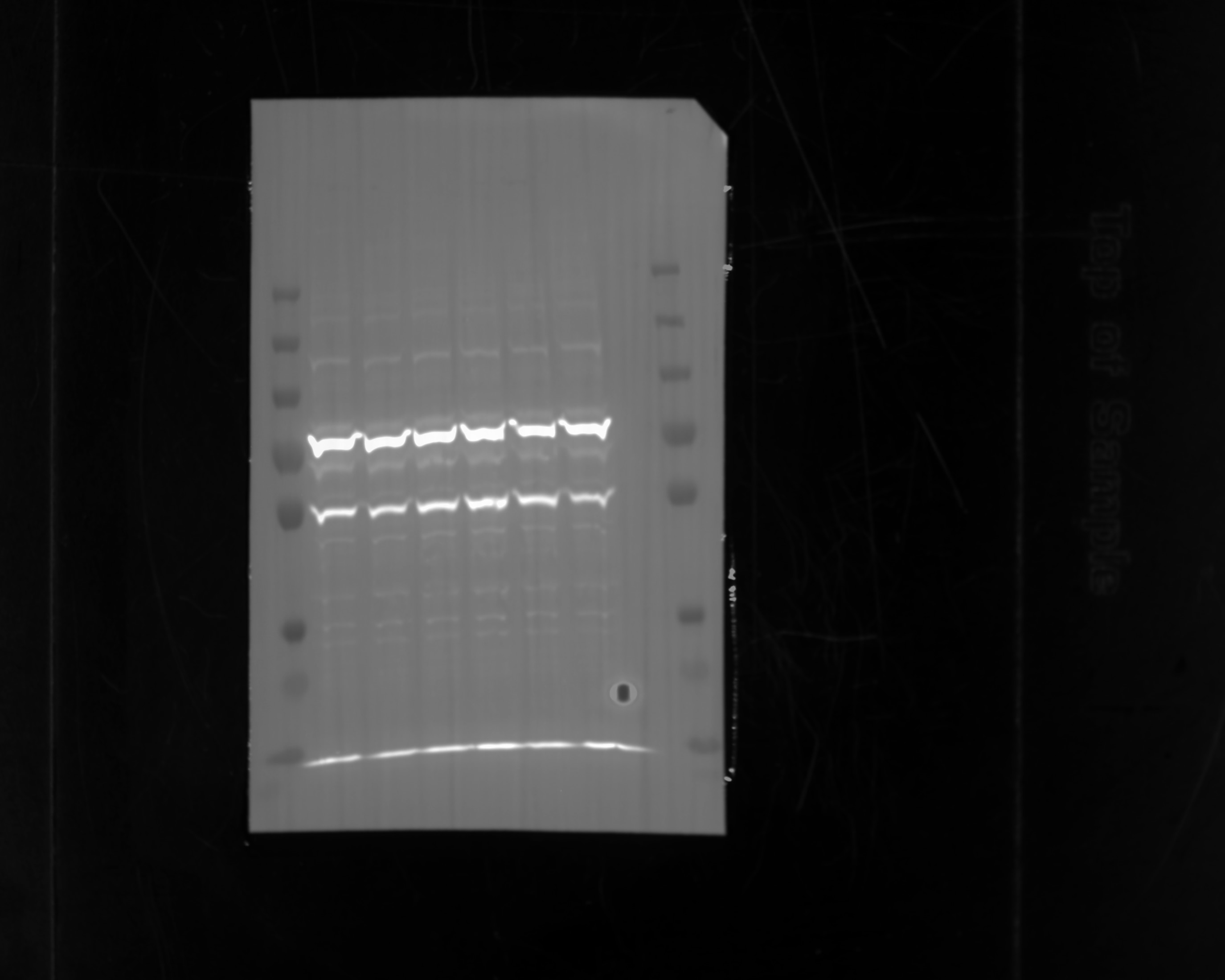 |
FH Gongsheng (Verified Customer) (11-02-2022) | This antibody works well in WB, diluation 1:1000, incubation at +4 °C.
|
FH Silvia (Verified Customer) (10-19-2021) | It works well for Immunofluorescence on hiPSCs
|
